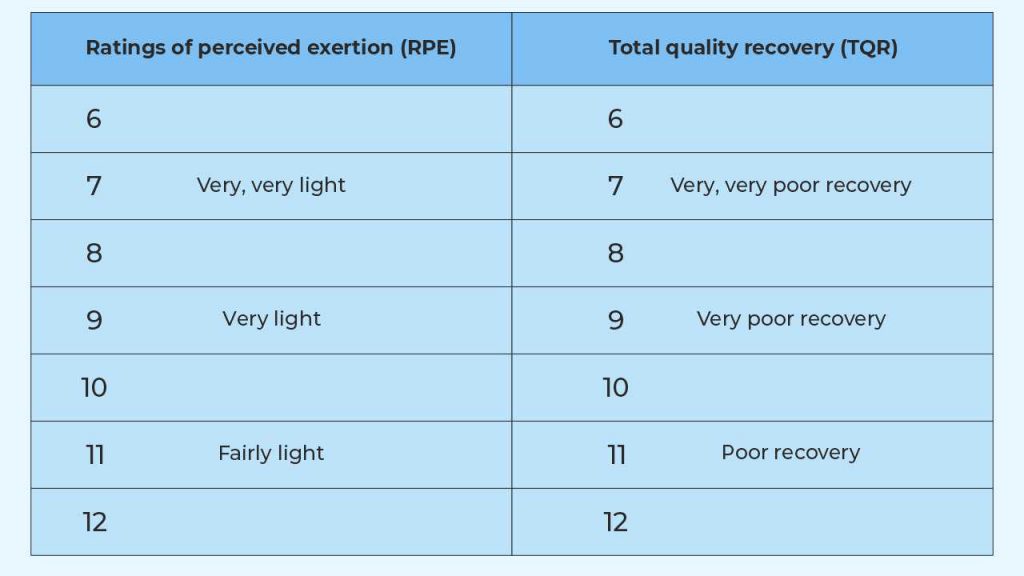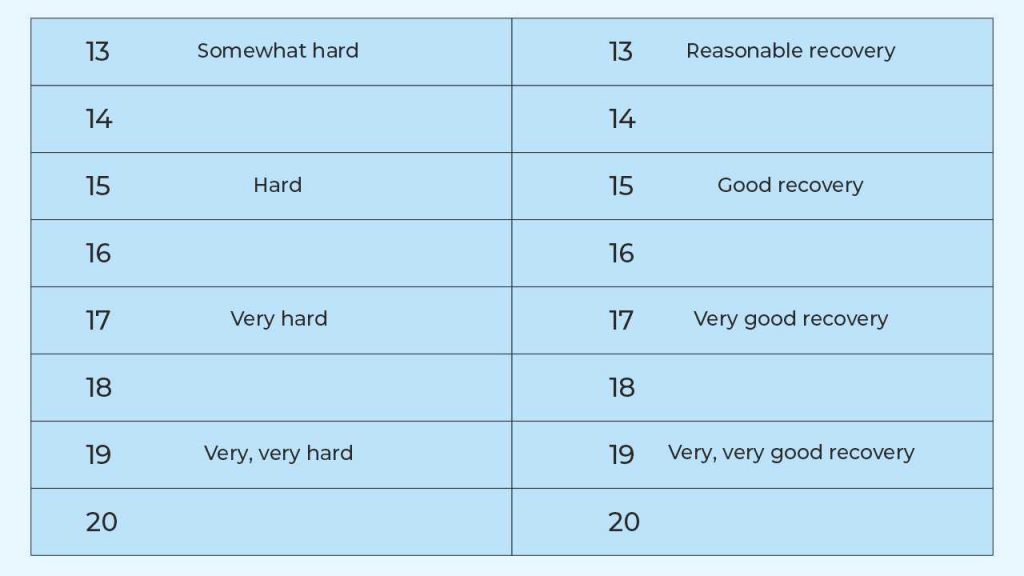
Overtraining: Symptoms and Recovery

Sport at the elite level has always been competitive. As a result, there is a search for training methods that help develop an athlete to their fullest potential and inculcate a winning spirit in them. Sports-related research by exercise scientists has equipped coaches and athletes with aggressive and optimum training regimens.
The human body has a limit to the physical training stress that it can bear. An athlete will be able to handle higher training stress only if they get adequate time for rest and recovery. Hans Selye described this basic principle in the 1930s and called it the General Adaptation Syndrome. According to him, if there is insufficient rest and recovery after a stressor, then the organism reaches a state of exhaustion.
In his position paper on overtraining, Dr Phil Maffetone models successful training with a simple equation:
Training = Workout + Recovery
Also Read: Why Is Active Recovery Important for Runners?
When the duration and intensity of exercise are high, they have to be in tandem with recovery to ensure adaptation. So, if the recovery is inadequate in response to duration and/ or intensity, it will result in overtraining.
The term overtraining has many definitions. The study by Jeffrey B Kreher and Jenifer B Schwartz describes it as a “maladapted response to excessive exercise without adequate rest, resulting in perturbations of multiple body systems (neurologic, endocrinologic, immunologic) coupled with mood changes”.
So, it is a syndrome that makes itself manifest when an athlete’s performance is diminished, as they are unable to cope with the increased training load. Do note that training load is a combination of intensity, duration, and frequency of exercise
While overtraining negatively impacts performance, there is another concept known as overreaching. It is a well-timed accumulation of training load followed by a strategic period of rest. During this duration, there is overcompensation, resulting in a marked increase in performance. If overreaching is ill-timed and extreme, it can result in overtraining, which can lead to physiological, psychological, and biochemical changes, such as systemic inflammation, depressed mood, and central fatigue. Several alternative terminologies are used to describe overtraining. Some of them are burnout, staleness, stagnation, overstrain, and chronic fatigue.
Overtraining symptoms
The European College of Sports Science, in a position statement, gives these symptoms of overtraining, which are derived from the effect on the autonomic nervous system.
1. Parasympathetic
- Fatigue
- Depression
- Bradycardia
- Loss of motivation
2. Sympathetic
- Insomnia
- Irritability
- Tachycardia
- Hypertension
- Restlessness
3. Other signs
- Anorexia
- Weight loss
- Lack of mental concentration
- Sore muscles
- Anxiety
- Unrefreshed on awakening
Other consequences associated with the overtraining syndrome include overuse injuries, poor performance, immune system deficits, lower sub-maximal and maximal heart rates, decreased maximum oxygen uptake (VO2max), and decline in sub-maximal and maximal lactate levels.
The aforementioned symptoms are a result of excessive training loads. However, it is difficult to identify them in the course of heavy training. So, usually, they get detected after the training cycle.
Researchers have attempted to identify ways to forewarn coaches on impending overtraining, and the methods used vary. The most recent method of using heart rate (HR) variability involves the ability to detect a lack of recovery. However, this is subjective and requires a certain skill to interpret data.
Dr Phil Maffetone outlines three stages of overtraining with guidelines to monitor the signs along with recovery measures. He estimates that recovery from stage 1 of overtraining may take one to three weeks, provided the athlete follows the measures timely.
Recovery in stage 2 may take one to three months or more, while stage 3 overtraining may take months or years for recovery. His model, as summarized in his paper, is explained here.
Dr Maffetone’s three-stage model of the overtraining syndrome
The overtraining syndrome can start with the transition from healthy to unhealthy training, functional to non-functional overreaching, and positive exercise benefits to the onset of impairment. It is highlighted by abnormal physical, biochemical, and mental-emotional injuries.
Stage 1
1. Effect on performance: It may result in increased training and/ or lack of recovery. You can be at a high risk of health and fitness impairments and abnormal symptoms may start.
2. Symptoms: You may experience an increased awareness of stress and the need for recovery and sleep. A few symptoms include increased fatigue, hunger, and muscle soreness.
3. Signs: You may witness reduced submaximal performance, ie aerobic threshold, increased resting HR, and sleep disturbance.
4. Actions: Reduce your training intensity and volume. Increase your recovery and sleep periods. Address lifestyle-related stress and make dietary modifications. Do a complete clinical evaluation if you do not recover after one week.
5. Recovery: You may recover within a short period, which may range from one to three weeks.
Stage 2
1. Effect on performance: Your capability to train and perform competitively may decline due to insufficient recovery. This results in further health and fitness impairment, such as immune and gastrointestinal dysfunction.
2. Symptoms: Fatigue, pain, depression, anxiety, and daytime sleepiness. You may even crave sweets.
3. Signs: You may notice increased cortisol, other hormonal imbalance issues, and menstrual problems. Moreover, your resting and exercise HR may rise. A few key indications include illness, physical injury, and sleep disturbance.
4. Actions: Stop high-intensity training or any competitions. Reduce training volume. Increase recovery and sleep time. Address your diet or any stress. Undergo a complete clinical evaluation.
5. Recovery: You may recover in a moderate tenure, which may be anywhere between one to three months.
Stage 3
1. Effect on performance: You may experience reduced hypothalamic–pituitary–adrenal (HPA) axis response to stress. Your health may worsen and your training and competitive performance may significantly be affected.
2. Symptoms: The symptoms are more serious compared to stage 2. You may feel demotivated to train and compete.
3. Signs: You may go through a serious progression of illness, injury, and poor health. Additionally, you may experience reduced sympathetic and parasympathetic function, cortisol, and other hormones. Your resting HR may also decline.
4. Actions: Eliminate any hard training or competition. Reduce training volume significantly. Increase sleep. Monitor your diet and other lifestyle-related stress.
5. Recovery: It may take a long time to recover. This tenure may range from months to years.
It is particularly interesting to understand one more model that uses a structured system to identify overtraining. This is developed by Kenta and Hassmen from the department of Psychology, Stockholm University. It is titled Overtraining and Recovery – a conceptual model. They called their method Total Quality Recovery.
They developed a subjective scale similar to the Borg scale for Rating of Perceived Exertion (RPE) to quantify recovery. The objective was to review and accelerate the process of recovery. The TQR scale compelled the athlete to focus inward, resulting in a heightened awareness of their well-being. The athlete is asked to rate their recovery for the previous 24 hours by directing attention to mood, soreness, and other bodily signals. The scale is reproduced for easily understanding their concept.
Once the athlete rates recovery on this scale, they are directed to quantify the actions they have taken over the same 24 hours, to aid recovery.
Here is the visual representation:


The actions are based on four approaches to recovery. These include:
1. Nutrition and hydration
The ability to tolerate physiological stress is dependent on adequate intake of carbohydrates, fluids, and electrolytes in a phased and timed manner. It is well-established that replenishment of glycogen and cellular fluids is essential for tolerating high-intensity workouts.
2. Sleep and rest
This includes both physical inactivity and adequate sleep.
3. Relaxation
This includes methods, such as meditation, saunas, massages, and floatation tanks.
4. Stretching
Stretching allows increased blood flow to the muscles, joints, and associated connective tissue.
These four actions on recovery strategies are scored with a maximum of 10 points for nutrition and hydration, 4 points for sleep, and 3 each for relaxation and stretching, bringing the total to 20 points just as in the Borg scale.
Once the score is obtained, the theory states that the rating you subjectively give on the RPE scale should be more or less equal to TQR score. It is because if your fatigue and exertion are less, you will recover faster. Similarly, if your exertion is high, you will require more time to recover.
Ideas to prevent overtraining
The study by Kreher and Schwartz specifies these preventive measures for overtraining:
1. Periodize your training in different phases
Ensure that you have a structure and gradual progression to your training plan. This involves stage-wise training. Focus on building mileage in the first phase, increase speed in the second phase, add race-specific runs in the third phase, and finally taper.
2. Adjust training load based on performance
Alter your weekly training load or mileage based on your ability and performance in training.
3. Consume adequate calories to match training intensity
If your training load is high, then ensure that you eat a sufficient amount of carbohydrates, protein, and healthy fats.
Also read: How to Fuel for Long-distance Runs
4. Be hydrated
Depending on the weather when you train, make sure to drink fluids at periodic intervals to remain completely hydrated. Remember that dehydration will impair your performance in training.
5. Rest well
Make it a point to rest at least six hours between exercise bouts to recover for the second workout. Also, that you get enough sleep at night.
6. Avoid training in extreme environmental conditions
Check the weather and decide on the alternative of either skipping the session, doing less than what was scheduled, or training in a closed, air-conditioned environment.
Recognizing overtraining syndrome at a very early stage is key to maximizing athletic performance and maintaining good health. Some futuristic technologies are being tested, so hopefully, more precise diagnostic tools may be available in the future. These technologies are focusing on changes in metabolism and psychomotor speed. Physic-chemical sensors are being developed to detect these changes.
References
1. https://philmaffetone.com/the-overtraining-syndrome/
2. https://www.ncbi.nlm.nih.gov/pmc/articles/PMC3435910/pdf/10.1177_1941738111434406.pdf
3. file:///C:/Users/Daniel%20Vaz/Downloads/Overtraining_and_recovery_A_conceptual_model.pdf














